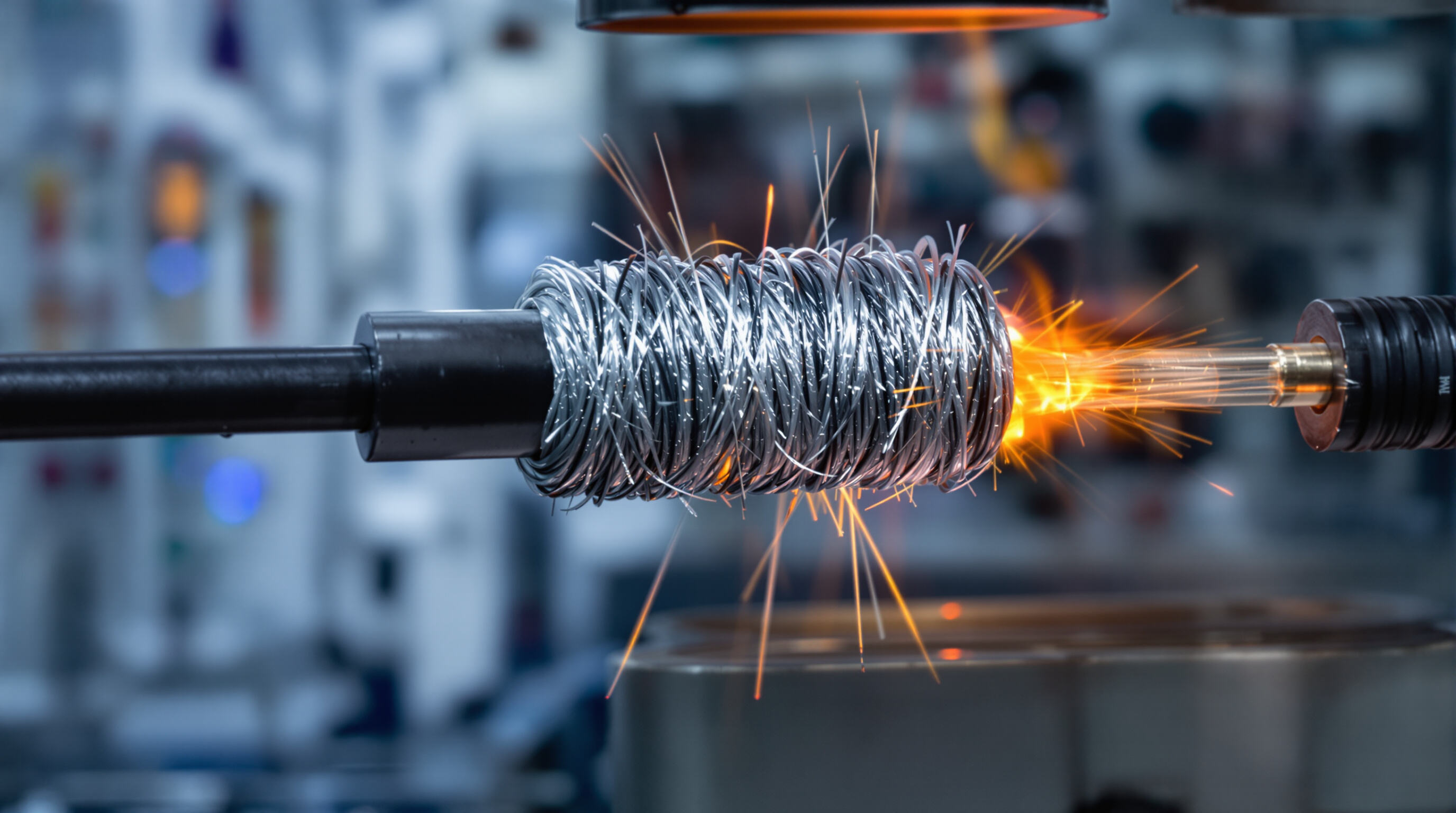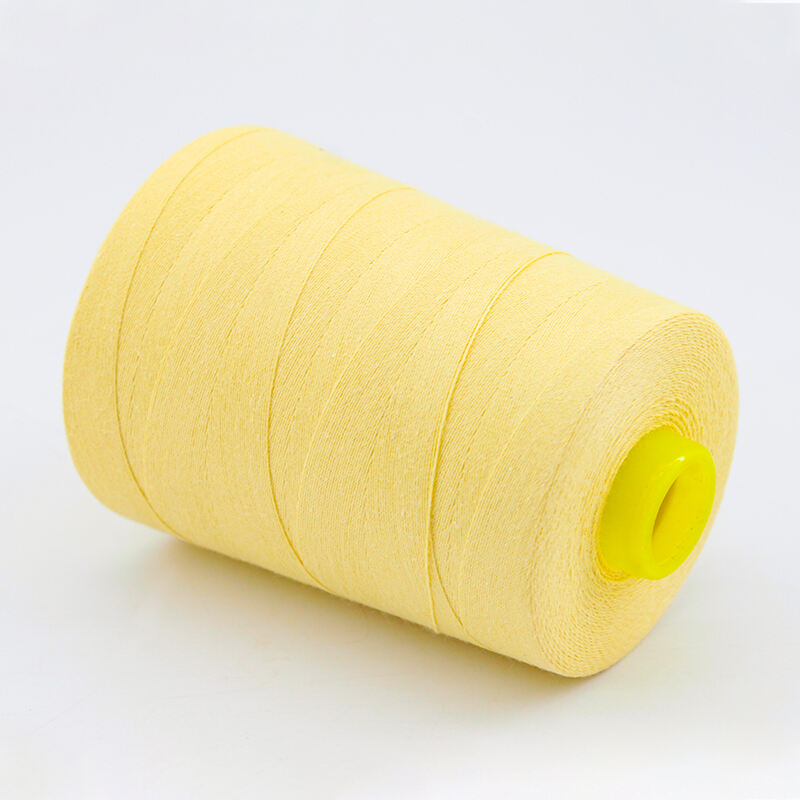Molecular Structure and Inherent Thermal Resistance of Aramid Yarn

What Makes Aramid Yarn Unique in High-Temperature Environments
Aramid yarn holds up really well when exposed to intense heat because of those aromatic polymer chains that are held together by hydrogen bonds, creating this kind of thermal resistance at the molecular level. Compared to materials like nylon or polyester, aramid keeps about 85 percent of its strength even at temperatures reaching 260 degrees Celsius according to research from Ponemon back in 2023. The material also has what's called a Limiting Oxygen Index of around 28%, which is way better than polyester's measly 20%. This means aramid basically puts itself out if there's a fire, which makes it absolutely necessary for things like insulating furnaces and protecting against dangerous electrical arcs.
Molecular Structure of Aramid Fiber and Heat Resistance Mechanism
Para-aramid fibers have these really rigid benzene rings arranged in parallel positions connected through amide bonds. This creates a super stable molecular framework that basically stops molecules from moving around even when temperatures hit 300 degrees Celsius. The way these fibers are structured actually pushes their decomposition point all the way up to 570°C, which is way past what most industrial processes ever encounter. Then there's meta-aramid, which has a different arrangement where those substituents sit in the meta position instead. This gives it more bendiness without sacrificing heat resistance. Industrial tests show that after sitting at 200°C for 500 straight hours, these materials lose less than 3% of their mass, making them incredibly durable for high temperature applications.
Principle of Intermolecular Hydrogen Bonding and Aromatic Backbone Rigidity
The thermal performance of aramid stems from the synergy between its rigid aromatic backbone and dense hydrogen bonding:
- Hydrogen bond density: 4.5 bonds/nm² enables effective energy dissipation during thermal stress
- Crystallinity: 60–85% crystalline regions prevent chain slippage under load
- Thermal conductivity: 0.04 W/m·K limits heat transfer through the fiber
This architecture allows aramid to surpass steel in strength-to-weight ratio while enduring temperatures high enough to melt aluminum (660°C).
Thermal Performance: How Aramid Yarn Withstands 200–300°C

Phenomenon of Heat Resistance in Aramid Yarn at 200–300°C
The material known as Aramid keeps its shape even when exposed to temperatures ranging from about 200 degrees Celsius up to around 300 degrees because of how its molecules are arranged. Its structure includes these special aromatic rings along with really strong connections between molecules. Most regular synthetic materials start breaking down or melting once they reach just over 150 degrees. But Aramid is different since it has those tough covalent bonds plus hydrogen bonds which take much more energy to disrupt compared to what happens with something like nylon where only weak van der Waals forces hold things together. This makes Aramid stable for extended periods in situations where there's constant exposure to high heat.
Decomposition Temperature and Limiting Oxygen Index (LOI) Data
Aramid’s thermal superiority is evident in key metrics:
| Property | Aramid Yarn | Nylon 6,6 | Polyester |
|---|---|---|---|
| Decomposition Temperature | 500–550°C (Doshine 2023) | 275–300°C | 290–320°C |
| Limiting Oxygen Index | 28–30 (self-extinguishing) | 20–22 (flammable) | 20–22 (flammable) |
An LOI above 28 means aramid will not sustain combustion in normal atmospheric conditions (21% oxygen), confirming its inherent flame resistance.
Long-Term Exposure Effects on Mechanical Integrity of Aramid Yarn
At 250°C, aramid retains 85% of its tensile strength after 1,000 hours—far outperforming para-aramid blends, which degrade 40% faster under the same conditions. Even after repeated thermal cycling, elongation-at-break stays below 5%, ensuring dimensional stability in demanding applications like industrial gaskets and seals.
Case Study: Thermal Degradation Behavior of Aramid in Industrial Testing
In a 12-month petrochemical plant trial, aramid-reinforced conveyor belts exhibited 30% less surface cracking than fiberglass counterparts when exposed to 260°C hydrocarbon vapors. Post-analysis via spectroscopy showed no breakdown of the fiber core, with only minor surface oxidation—easily managed with protective coatings.
Comparative Advantages of Aramid Yarn vs. Other Synthetic Fibers
Comparative Thermal Stability of Aramid Materials vs. Other Synthetic Fibers
When it comes to how well they handle heat, aramid beats both nylon and polyester hands down. Nylon starts breaking down around 220 degrees Celsius, and polyester gets all floppy close to 260°C. Aramid? It holds onto most of its strength even when things get as hot as 300°C because those molecules are locked together in these stiff aromatic structures. What makes this important is that regular materials tend to slip apart when heated, which is why cheaper stuff fails so often. Take rope for instance. A nylon rope will basically halve its ability to hold weight after just 100 hours sitting in 200°C heat. Meanwhile, aramid keeps doing what it's supposed to do without missing a beat in those same extreme conditions.
Thermal Conductivity and Flame Resistance of Aramid Fiber
Aramid has a thermal conductivity rating around 0.04 W/mK, so it doesn't transfer much heat at all. This makes aramid really good for insulating against radiant heat. When it comes to fire resistance, aramid scores between 28 to 30% on the Limiting Oxygen Index scale, meaning it resists flames naturally. Compare that to polyester which only gets about 20%, or polypropylene at 18%, both of which catch fire pretty easily. If exposed to flames briefly, aramid creates this protective char layer over itself that actually protects the fibers underneath. That's why people working in areas where fires might break out find aramid materials so valuable for their protection.
Controversy Analysis: Is Aramid Truly Non-Flammable?
Aramid won't catch fire until temperatures reach around 500 degrees Celsius, but it still isn't completely fire resistant. When exposed to heat above 300 degrees for extended periods, the material starts breaking down slowly over time. This breakdown reduces its strength by about 15 to 20 percent each year when used continuously. The good news is that aramid holds up much better than other materials though. It degrades about three times slower than phenolic fibers and roughly five times slower than glass reinforced plastics facing the same heat conditions. Not technically fireproof, aramid remains remarkably tough against heat damage between 200 and 300 degrees Celsius, which covers most practical applications where this material gets deployed.
Key Industrial Applications Leveraging Aramid Yarn's Heat Resistance
Aramid Fiber Applications in the Petrochemical Industry
Aramid yarn is widely used in refinery sealing systems for pipelines and high-pressure valves, where it maintains tensile strength up to 300°C. Its molecular stability prevents degradation from hydrocarbons and acidic environments, reducing maintenance costs by 18% in industrial trials.
Use of Aramid Yarn in Fire-Resistant Protective Clothing
Firefighters' protective gear relies on aramid yarn for its dual resistance to flames (LOI >28%) and thermal shrinkage. The fiber's rigid structure ensures garments remain intact after direct flame exposure, offering three times longer protection than aluminized materials at 260°C.
Role of Aramid in High-Heat Gaskets and Seals
In machinery operating above 200°C, aramid-reinforced gaskets leverage the fiber’s low thermal conductivity (0.04 W/m·K) to reduce heat transmission to sensitive components. These gaskets show 90% less deformation than PTFE alternatives after 1,000 hours at 250°C, as verified by ASTM F146 testing.
Frequently Asked Questions
What is aramid yarn?
Aramid yarn is a type of synthetic fiber known for its high thermal resistance, strength, and flame retardant properties. It is commonly used in applications that require durable materials that can withstand high temperatures.
How does aramid yarn resist high temperatures?
Aramid yarn resists high temperatures due to its molecular structure composed of aromatic polymer chains and strong hydrogen bonds, which provide stability and resistance to thermal stress.
What are some common applications of aramid yarn?
Common applications of aramid yarn include fire-resistant protective clothing, high-heat gaskets and seals, and industrial uses in the petrochemical industry for pipelines and high-pressure valves.
How does aramid yarn compare to nylon and polyester in terms of heat resistance?
Aramid yarn surpasses both nylon and polyester in heat resistance, retaining strength at temperatures as high as 300°C, whereas nylon and polyester start breaking down at much lower temperatures.




